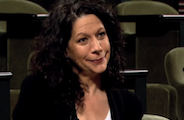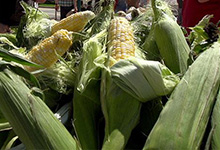Research Summary
Alberto Kornblihtt's research focuses on the regulation of alternative pre-mRNA splicing, with particular emphasis on the mechanisms that couple the splicing and transcription machineries. His group studies how changes in the rate of transcriptional elongation and recruitment of splicing factors to the transcribing polymerase affect alternative splicing and contribute to the generation of multiple protein variants from a single gene.
Alternative splicing is the major contributor to protein diversity. Recent findings justify a renewed interest in alternative splicing. Estimated to affect nearly 90 percent of human genes, alternative splicing is more the rule than the exception, and mutations that affect alternative splicing–regulatory sequences are a widespread source of human disease. Indeed, many genetic disorders and cancers are caused by mutations in coding sequences that were previously overlooked because they do not affect amino acid sequences but instead alter the function of alternative splicing–regulatory sequences. Alternative splicing regulation not only depends on the interaction of splicing factors with their pre-mRNA target sequences but, like other pre-mRNA processing reactions, is also coupled to RNA pol II transcription.
Our laboratory investigates the mechanisms of coupling between transcription and alternative splicing and the coupling's regulatory roles in human cells. Both transcription and splicing are highly complex processes, involving thousands of protein factors, RNA molecules, and DNA sequences. Two nonexclusive mechanisms have been proposed to explain the coupling. On the one hand, the changes in the rate of pol II elongation can influence the timing of cotranscriptional splicing. On the other hand, recruitment to the transcribing gene of splicing factors or factors acting simultaneously on both transcription and splicing may be key for the coupling.
DNA Damage and Alternative Splicing
DNA is the only biopolymer that is neither disposable nor recyclable, and therefore must be repaired when damaged. It has been estimated that through natural processes, such as the endogenous production of reactive oxygen species, more than 20,000 DNA lesions are produced per cell in a single day. Damage triggers specific intracellular signal cascades, lesion repair mechanisms, and gene-regulatory events that may result in mutation reversion or spreading, cell cycle arrest, senescence, or apoptosis. We showed that UV irradiation (UV-C, 254 nm) causes the hyperphosphorylation of the carboxy-terminal domain of the RNA polymerase II (pol II) large subunit, which slows the transcriptional elongation rate and affects alternative splicing of a subset of genes through the kinetic coupling of transcription and splicing. Now we are investigating the mechanisms that link the sensing of the damaged DNA (photoproduct sensing) to pol II hyperphosphorylation by exploring whether proteins of the CSB and XP families are necessary for the splicing response to damage. These proteins are key for damage repair through nucleotide excision and are mutated in patients with Cockayne syndrome and xeroderma pigmentosum, respectively.
To gain knowledge about the physiopathological consequences of the alternative splicing responses to damage, we will investigate the mechanism by which UV-B radiation (300 nm, of lower energy than UV-C but not fully filtered by the ozone layer) affects alternative splicing patterns in keratinocytes in culture. We will use high-throughput approaches such as RNA deep sequencing to define globally the alternative splicing events whose patterns are altered by UV-C or UV-B irradiation in keratinocytes and in skin-humanized mouse models.
The rationale for comparing the effects of UV-C and UV-B lights on alternative splicing is that while both types of light generate comparable amounts of cyclobutane pyrimidine dimer DNA lesions (CPDs), UV-B is much less efficient than UV-C in generating 6-4 photoproducts (6-4 PPs). This prompts us to investigate whether there is a photoproduct-specific response, for which we will transfect cells in culture with double-stranded oligodeoxynucleotides having exclusively either CPDs or 6-4 PPs and see whether they trigger different pol II phosphorylation and/or alternative splicing patterns.
Chromatin and Alternative Splicing I
Since 2009, a stream of exciting papers have demonstrated that chromatin structure, specific histone post-translational modifications, and nucleosome positioning along genes affect pre-mRNA splicing. Our lab made fundamental contributions that demonstrated key roles of chromatin and epigenetics in alternative pre-mRNA splicing. The new concept gaining acceptance is that chromatin changes occur not only near promoters but also inside genes and that these changes not only affect switching genes on and off, a role traditionally assigned to chromatin, but also influence the quality of the transcript by altering the patterns of alternative splicing.
The chromatin context affects pol II elongation rates and, in turn, alternative splicing. We discovered the mechanism by which membrane depolarization in nerve cells affects alternative splicing of the NCAM pre-mRNA by promoting intragenic histone acetylation, which loosens the chromatin and elicits greater transcriptional elongation. The NCAM splicing variant upregulated by this mechanism excludes exon 18, promotes a more disorganized actin cytoskeleton, and is typical of neuronal precursors. By contrast, the variant that includes exon 18 is associated with a more structured actin cytoskeleton and is typical of differentiated postmitotic neurons.
Our main interest now is to investigate whether an opposite mechanism takes place during neuron differentiation. Preliminary evidence indicates that the same regions of the NCAM gene whose chromatin is hyperacetylated by neuron depolarization becomes methylated upon differentiation, generating silencing marks (H3K9me2 and H3K27me3) that slow down elongation and promote exon 18 inclusion.
Chromatin and Alternative Splicing II
We found that small interfering RNAs (siRNAs) targeting introns located downstream of alternative exons affect alternative splicing through a mechanism known as transcriptional gene silencing. The intronic siRNAs trigger heterochromatinization on DNA target sequences by causing histone H3K9 dimethylation and subsequent inhibition of transcriptional elongation, which in turns affects alternative splicing. The effects of intronic siRNAs on alternative splicing take place in the nucleus and are not related to conventional post-transcriptional gene silencing (PTGS) by micro- and other small RNAs, which is cytoplasmic. We found that the argonaute protein AGO1 is necessary for these chromatin effects of siRNAs to occur. The roles of argonaute proteins in cytoplasmic PTGS are well established. However, their implication in small RNA–mediated transcriptional gene silencing in the mammalian cell nucleus is less understood. We are interested in elucidating the nuclear activities of AGO1 and the extent of its role in the regulation of alternative splicing.
Plant Alternative Splicing: Night and Day
Our lab is also investigating the mechanism by which light/dark conditions affect alternative splicing in Arabidopsis. We found that exposure to white light affects alternative splicing decisions of several genes. Red and blue lights are able to duplicate the effects of white light. We used mutants to rule out the participation of phytochrome and cryptochrome pathways. We found that the chloroplast is the light-sensing organelle involved in the generation of a retrograde signal acting in the nucleus in the regulation of alternative splicing of selected genes. The signal travels from the aerial parts of the plant to the root, where it affects splicing in similar ways, but the root does not generate the signal on its own. Inhibition of the chloroplast electron transport chain blocks the effect of light. Our result indicate that the pool of reduced plastoquinones generated in the tilakoid electron transport chain is responsible for initiating the retrograde signal triggered by light, whose endpoint effects are seen at the alternative splicing level. Our main interest in the near future will be to identify the cascade of events and actors that participate in the signaling, from reduced plastoquinones to the change in alternative splicing.
Simultaneously, we plan to use plants to investigate the coupling between chromatin, transcription, and alternative splicing. We will assess alternative splicing patterns in well-characterized mutants of Arabidopsis to evaluate the effects of histone-modifying enzymes, chromatin remodelers, pol II elongation factors, gene-silencing factors, and splicing regulators on basal and light-regulated alternative splicing patterns. This kind of genetic approach cannot easily be performed in mammalian cells except by using RNAi, whose results are not as clear-cut as those of gene disruption. It could be done in yeast, but yeast does not have alternative splicing. Therefore, plants will represent an important system for studying this problem in general.
As of September 26, 2012




